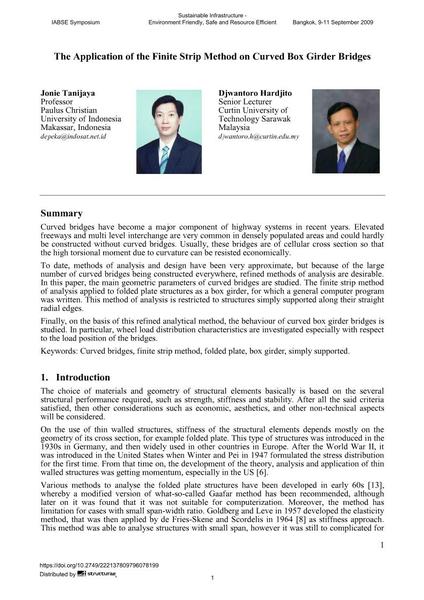The Application of the Finite Strip Method on Curved Box Girder Bridges

|
|
|||||||||||
Bibliographic Details
| Author(s): |
Jonie Tanijaya
Djwantoro Hardjito |
||||
|---|---|---|---|---|---|
| Medium: | conference paper | ||||
| Language(s): | English | ||||
| Conference: | IABSE Symposium: Sustainable Infrastructure - Environment Friendly, Safe and Resource Efficient, Bangkok, Thailand, 9-11 September 2009 | ||||
| Published in: | IABSE Symposium Bangkok 2009 | ||||
|
|||||
| Page(s): | 112-119 | ||||
| Total no. of pages: | 8 | ||||
| Year: | 2009 | ||||
| DOI: | 10.2749/222137809796078199 | ||||
| Abstract: |
Curved bridges have become a major component of highway systems in recent years. Elevated freeways and multi level interchange are very common in densely populated areas and could hardly be constructed without curved bridges. Usually, these bridges are of cellular cross section so that the high torsional moment due to curvature can be resisted economically. To date, methods of analysis and design have been very approximate, but because of the large number of curved bridges being constructed everywhere, refined methods of analysis are desirable. In this paper, the main geometric parameters of curved bridges are studied. The finite strip method of analysis applied to folded plate structures as a box girder, for which a general computer program was written. This method of analysis is restricted to structures simply supported along their straight radial edges. Finally, on the basis of this refined analytical method, the behaviour of curved box girder bridges is studied. In particular, wheel load distribution characteristics are investigated especially with respect to the load position of the bridges. |
||||
| Keywords: |
box girder folded plate Curved Bridges finite strip method simply supported
|
||||
